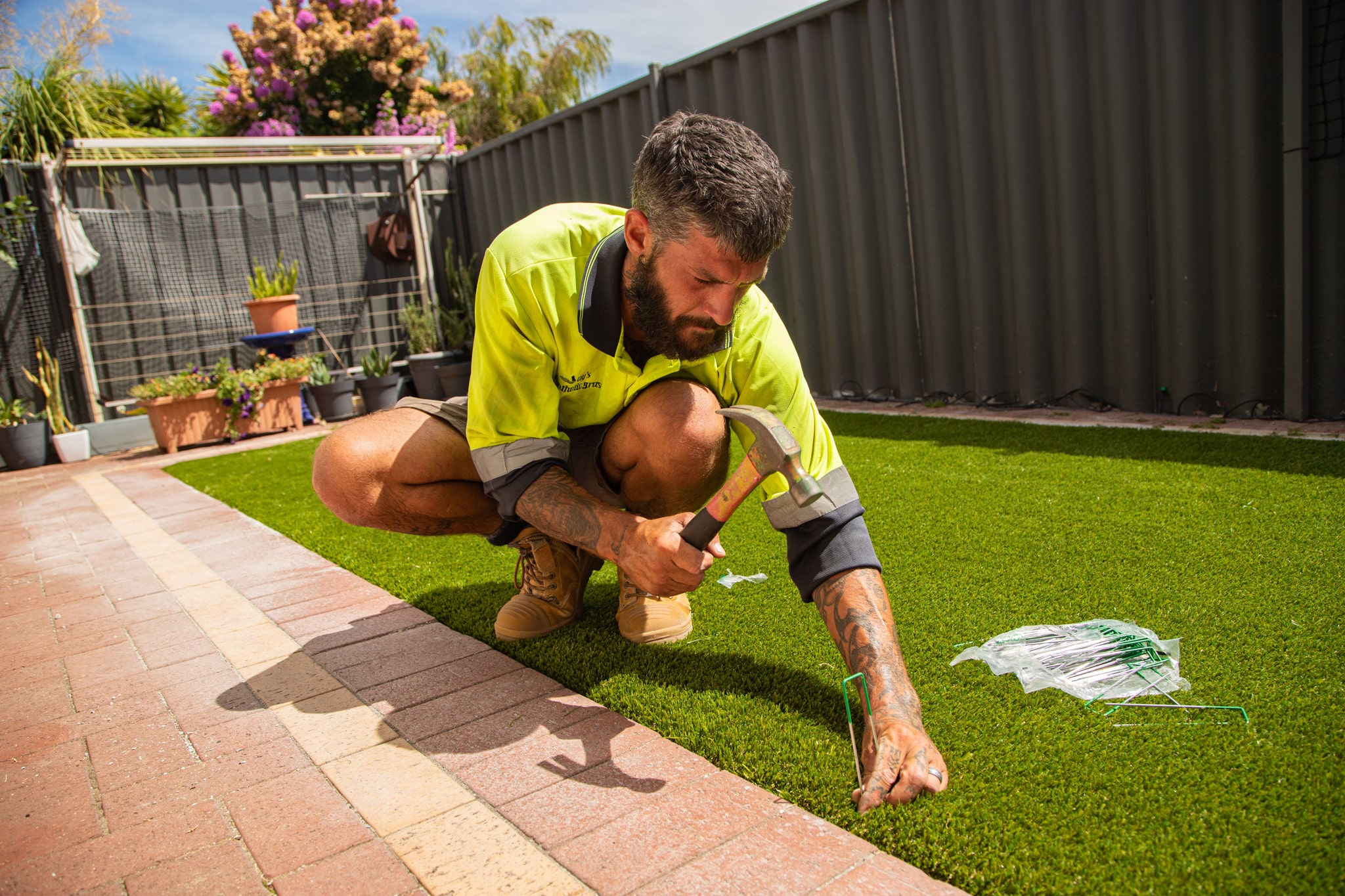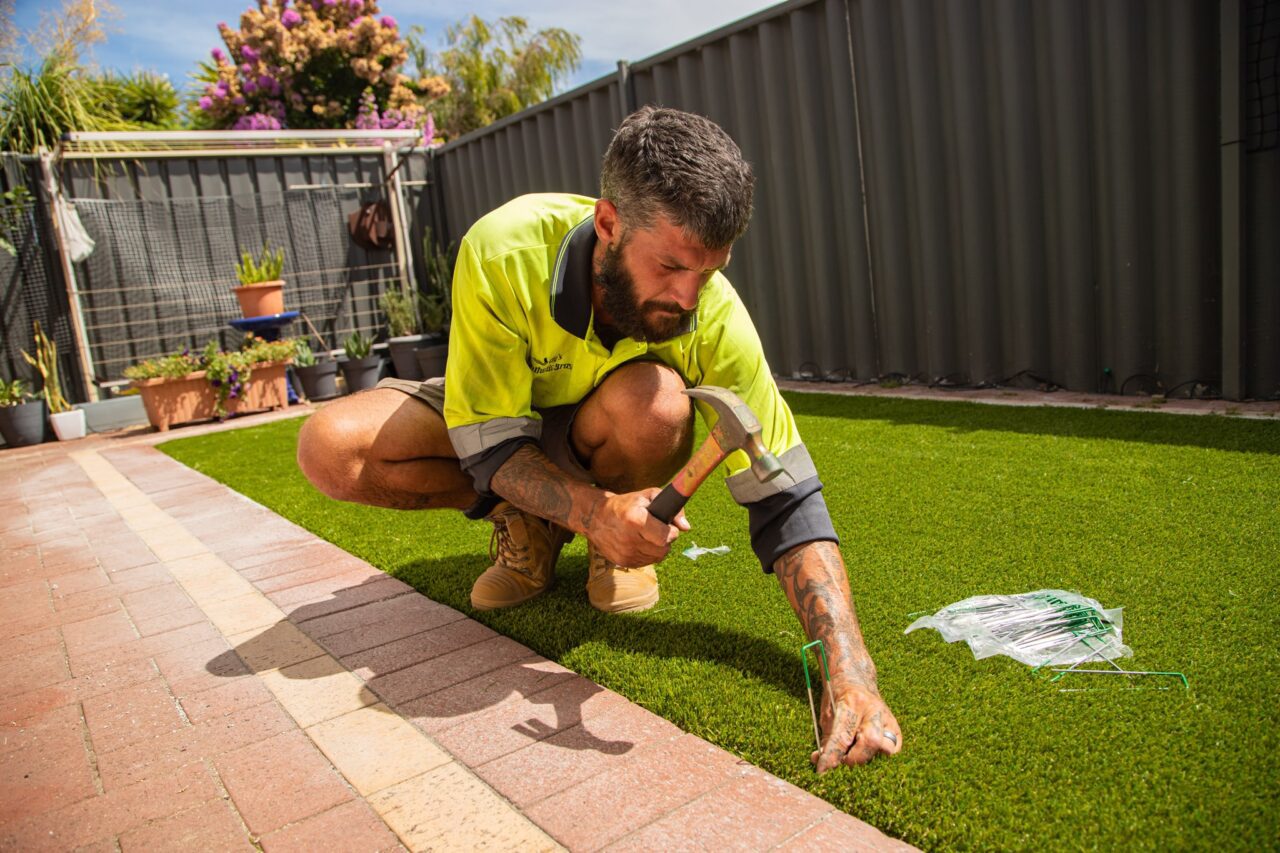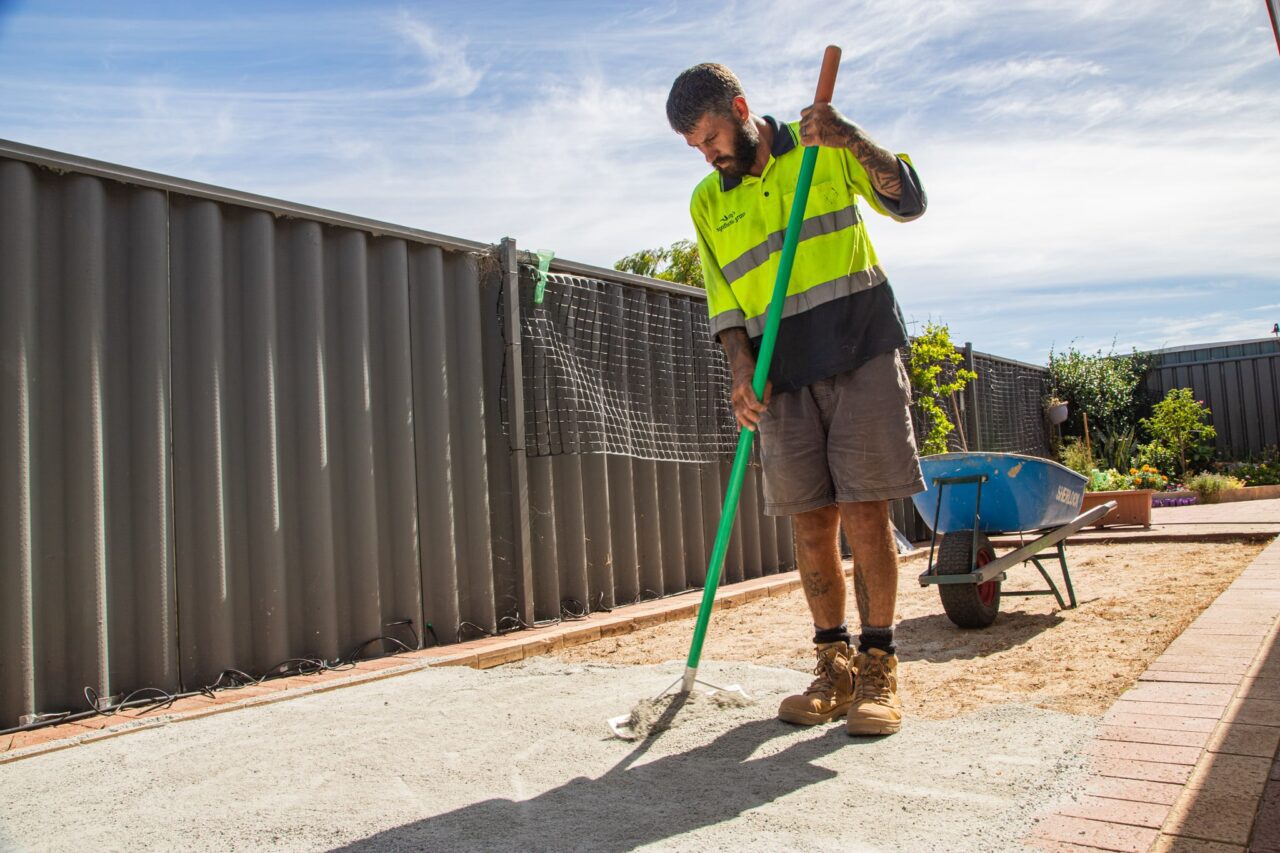DIY Artificial grass installation can be a fun and rewarding project, and with a little effort, you can transform your outdoor space into a beautiful and functional area that you and your family can enjoy for years to come. In this detailed guide, we’ll provide you with step-by-step instructions on how to install artificial grass on your own, including tips on how to measure the area, prepare the site, and lay the turf. So, let’s get started!
Step 1: Measure the Area
The first step in DIY artificial grass installation is to measure the area where you want to install it. This will help you determine how much artificial grass you will need to purchase. Keep in mind that most artificial grass comes in rolls that are either 12 or 15 feet wide, so you may need to seam two pieces together if your area is wider than that.
Step 2: Prepare the Site

Once you’ve measured the area, it’s time to prepare the site. Remove any existing grass, weeds, or debris from the area. Ensure that the soil is level and compacted by using a plate compactor or hand tamper to compress the soil and create a firm base for the artificial grass.
Step 3: Install the Base
After the site is prepared, it’s time to install the base for the perth artificial grass. The base provides a stable foundation for the turf and helps with drainage. Depending on your location and drainage needs, you may choose to use a crushed stone base or a compacted sand base. Spread the base material evenly over the site and use a plate compactor or hand tamper to compress it.
Step 4: Lay the Artificial Grass
With the base in place, it’s time to lay the artificial grass. Start by unrolling the turf and positioning it over the base. Make sure the turf is aligned with the edges of the site and cut off any excess with a utility knife. If you need to join two or more pieces of turf together, use a seaming tape to connect them. Be sure to leave a small gap between the pieces for the tape. Once the turf is in place, trim the edges to fit using a utility knife.
Step 5: Secure the Turf

After the artificial turf is in place, it’s time to secure it. Use landscape stakes or heavy-duty staples to anchor the edges of the turf to the base. Be sure to space the stakes or staples about 6 inches apart along the edges. This will help prevent the turf from shifting or moving.
Step 6: Add Infill
Finally, it’s time to add infill to the turf. Infill is a material that is added to the turf to help it stand up and provide cushioning. The type of infill you choose will depend on the intended use of the turf. For example, silica sand is a good choice for residential artificial lawns, while rubber granules are better for sports fields. Spread the infill evenly over the turf using a broom or rake. Be sure to work the infill down into the turf fibres for optimal coverage.
Benefits of DIY Artificial Grass Installation
Installing artificial grass yourself can save you money and give you a sense of accomplishment. By following the step-by-step guide we’ve provided, you can ensure a successful installation. In addition to being cost-effective, artificial grass is low maintenance, durable, and has a realistic appearance. It is also eco-friendly and can save you water and energy in the long run. Another benefit is that it can be used in various settings such as residential lawns, rooftop gardens, and commercial spaces.
Tips for DIY Artificial Grass Installation
Here are some tips to ensure the success of your DIY artificial grass installation:
- Take your time: Don’t rush the installation process. Ensure that you take your time and perform every step of the DIY artificial grass installation process correctly. Rushing can lead to mistakes, which can ultimately impact the quality and longevity of your artificial grass. Double-check your measurements, make sure the base is level and compacted, and take care when cutting and laying the turf. By taking your time and being patient, you can ensure that your artificial grass installation is a success and will provide you with a beautiful and low-maintenance outdoor space for years to come.
- Make sure you purchase enough artificial grass for the project, including any extra for cuts and seams.
- If you live in a particularly hot climate, consider using an artificial grass with a lighter color or a cooling technology to prevent it from getting too hot to touch.
- To ensure proper drainage, make sure the base slopes away from any nearby structures.
- Consider using a weed barrier underneath the artificial grass to prevent any unwanted growth.
- If you’re not sure how to properly install your artificial grass, consider watching online tutorials or seeking advice from professionals.
By following these tips and taking your time to properly prepare and install your artificial grass, you can ensure a successful and long-lasting project that will add value and beauty to your property.
Conclusion
DIY artificial grass installation can be a fun and rewarding project that offers many benefits over natural grass. With careful planning, preparation, and attention to detail, you can successfully transform your outdoor space and save money in the process. If you have any doubts about your ability to complete the installation, don’t hesitate to seek advice from professionals. With their guidance, you can ensure a beautiful and functional outdoor space that you and your family can enjoy for years to come.
If you find that DIY artificial grass installation is not for you, or if you simply want to save time and effort, consider seeking professional installation services. At Jay’s Synthetic Grass, we offer exceptional supply and installation services for artificial grass in Perth. Our experienced team has over a decade of experience and can ensure that your artificial grass is installed correctly and efficiently, giving you a beautiful and functional outdoor space. Contact us today to learn more about our services and to get started on your artificial grass installation project.



